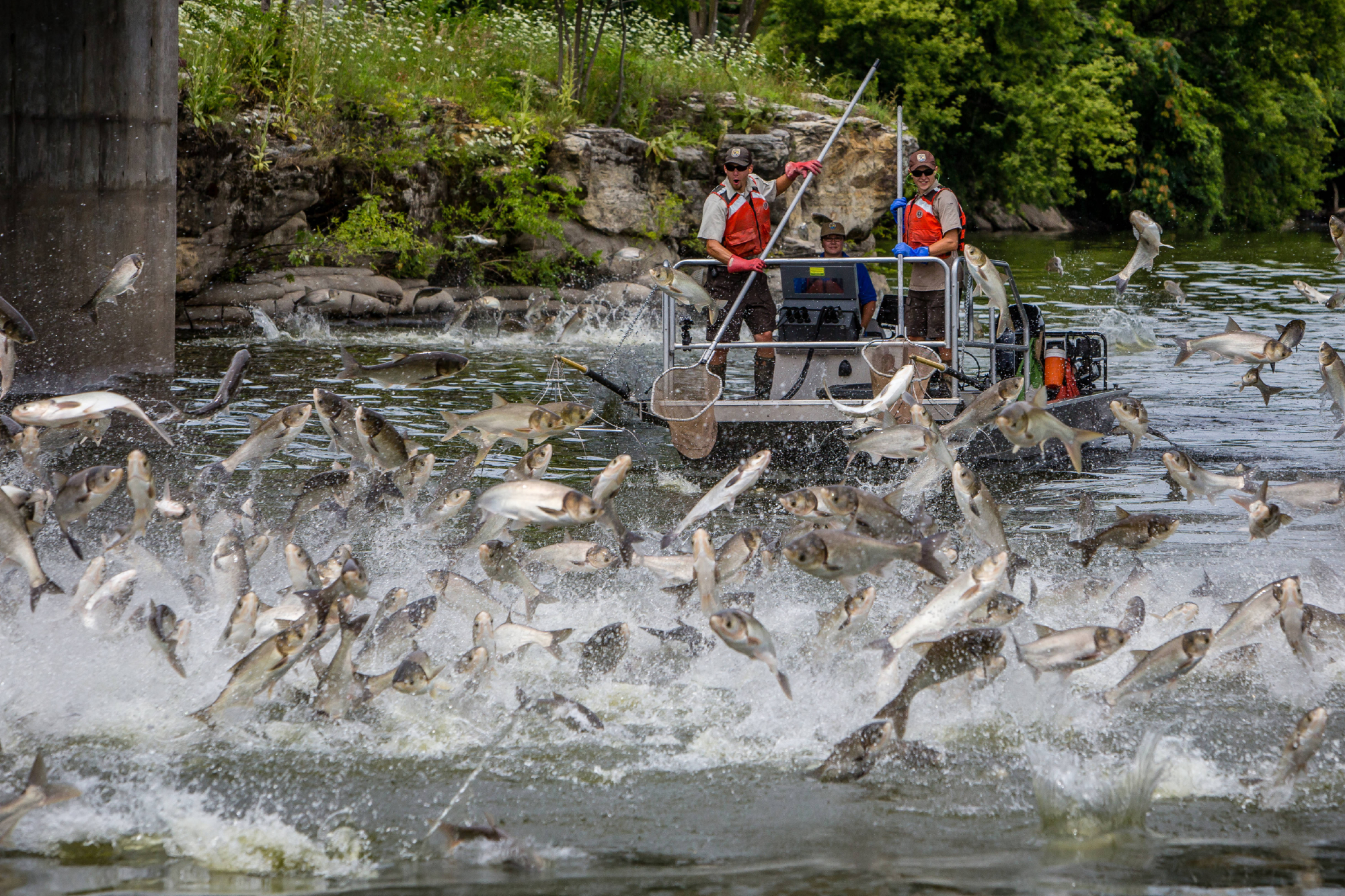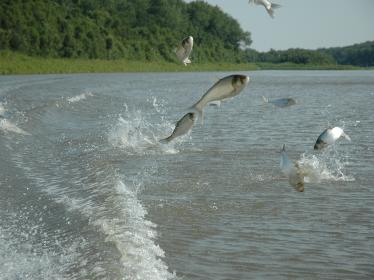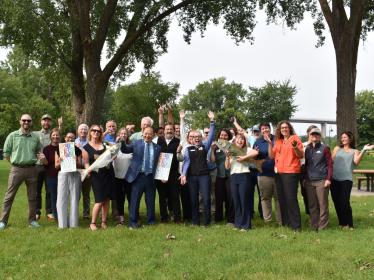Why we need to act now against invasive carp

Silver carp can jump up to 10 feet in the air when startled by a boat. Here you can see dozens leaping out of the Fox River in Illinois. (Photo by Ryan Hagerty/USFWS)
For decades invasive carp (silver, bighead, black and grass carp) have been working their way up the Mississippi River. As they outcompete other fish for food and space, ecosystem diversity, water quality and recreational opportunities decrease in the river and tributaries from Minnesota to the Gulf.
Invasive carp are introduced predators, brought to the U.S. in the 1970s to clean aquatic farms and canals. Having no natural predators in North America, they easily outcompete native fish. As invasive carp increase, native fish and our ecosystem's health decline.
Silver carp can even injure people. Sometimes weighing over 40 pounds, they can jump high enough out of the water to potentially hit boaters (as you can see in the video below). Tourism and recreation economies suffer in areas with high silver carp populations.
In Minnesota, silver carp have been recorded in the Mississippi River as far north as the Twin Cities metro and in the St. Croix and Minnesota rivers. However, we believe that most of their population, and likely their reproductive activity, is still further downstream.
But carp populations often explode unexpectedly. Nobody knows when our stretch of the river will reach a tipping point of no return.
We may have only a small window of time to stop invasive carp before they reach Lake Pepin (the largest lake on the Mississippi River), our metro Mississippi, the St. Croix and Minnesota rivers, and other treasured waterways.
What options might be considered?
Invasive carp prevention and management is not simple. We'll need to combine several tools and tactics.
One promising option is to install a "fence" that uses sound and bubbles to deter carp from trying to travel through the lock chamber at Lock and Dam 5, located roughly 10 miles upstream of Winona. We know carp are knocking at the door of this lock and dam, and we know upstream dams wouldn't be nearly as effective of places to install a barrier due to their different designs.
Carp management will also need to include fish removal programs, strengthening the resilience of our native ecosystems, continuing research on additional options and other efforts.
While we don't know how exactly many invasive carp are in Minnesota, we do know that the threat is imminent and that our state isn't ready for what's to come. Our state leaders must evaluate and implement prevention strategies before it's too late.


